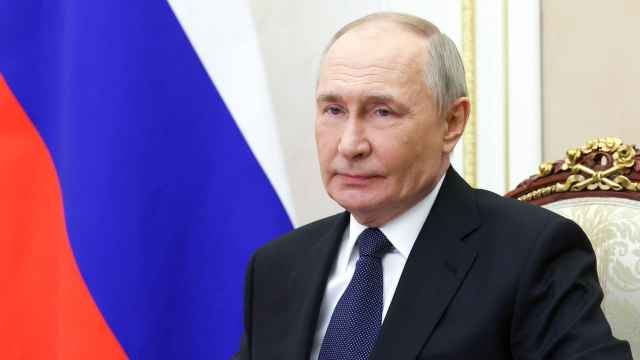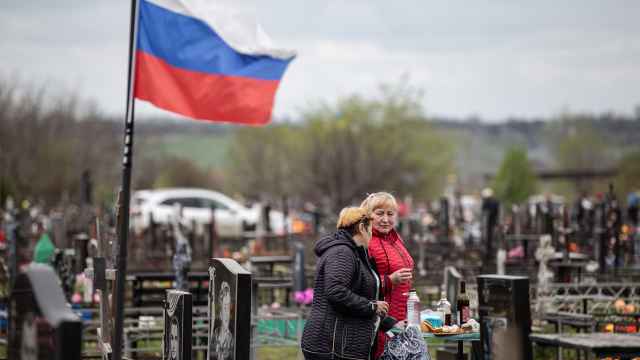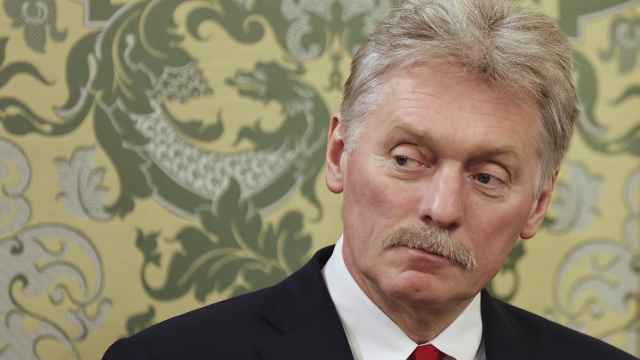After a late start, penthouses have become the standard for luxury, as well as the priciest residential real estate in Moscow. REQ looks inside this secretive segment.
Home is where the heart is. For a fortunate few, it's also where the rooftop pool is, along with the private elevator and the panoramic view of Russia's capital.
The most expensive residential real estate locations in Moscow — and some of the most expensive in the world — are the city's penthouses. Costing up to tens of millions of dollars, they offer the ultimate in status and luxury.
"The price depends a lot on the view," said Kalinka Realty's Viktor Sadygov as he stood inside a 930-square-meter penthouse and gestured toward the MKAD roadway, 11 kilometers to the west.
Located on the top floor of the 58-story Imperia Tower in the Moskva-City business hub, the penthouse is reached either by a private elevator that rises to the top in about a minute, or by way of the helipad on the roof.
Showing the residence during a recent press tour of penthouses, Sadygov, urban real estate director for Kalinka Realty, estimated that between 50 percent and 70 percent of a penthouse's price is derived from the view it offers. The Imperia Tower penthouse has one of the best in the city: In clear weather, the MKAD is visible, while in the other direction "you can see what holiday's going on in the Kremlin," he said. According to Kalinka Realty, the penthouse costs $20,000 per square meter, or a total of $18.6 million — and that's less than half of the $50,000 average price per square meter for penthouses in the city center.
The quality and quantity of Moscow penthouses has risen drastically since the segment's humble beginnings in the perestroika era. But measuring the dynamics of the segment is extremely difficult, given both the confidentiality demanded by buyers and the statistically insignificant number of sales each year, which typically can be counted on two hands. Realtors and consultants interviewed for this article had various estimates for average selling price, number of sales and effects of the financial crisis on the market.
What is definite, however, is that the penthouse market has established itself as the gold standard in local elite real estate, supplanting the once-popular mansard apartments. Today, Moscow's penthouses provide homes for the uber-wealthy in the city that has the highest number of billionaires in the world.
From the Forbes List
"The clients [purchasing penthouses] are from Forbes magazine," Sadygov noted, referring to the list of billionaires published by the business journal. The press tour afforded a rare opportunity to see inside these residences, which aren't usually advertised and are sold only to those who pass "face control" for screening potential residents, Sadygov said. Penthouses are rarely rented or bought for investment purposes, since the profit margins are small and the selling period is long, often years, realtors said. In fact, a sell period of five years is not unusual.
Penthouses in Moscow cost about $50,000 per square meter in the city center if they have a good view.
Alyona Brigadnova,
Kalinka Realty
Alyona Brigadnova, head of the sales department at Kalinka Realty, estimated that a penthouse bought by an investor for $15 million to $17 million might sell for $20 million minus the cost of outfitting it (Russian penthouses are usually sold in a basic shell-and-core condition when marketed for the first time).
For centuries, attic apartments have existed in European cities, including St. Petersburg, and have been immortalized in creative works such as Giacomo Puccini's opera "La boheme." The box-like, high-sided mansard roof was popularized by French architects hundreds of years ago. But the first true penthouses — luxury apartments on the uppermost floor of a high-rise — appeared in New York in the 1920s.
Russia's first penthouse was, by many accounts, built in 1930 on the roof of the Narkomfin Building, a famous example of Soviet constructivist architecture near the U.S. Embassy on Novinsky Bulvar. Nikolai Milyutin, a groundbreaking architect and then-commissar of finance for Soviet Russia, constructed a rooftop residence for himself once the six-story communal apartment building was completed, according to a 2006 article in Bolshoi Stolichny Zhurnal.
Realtors noted, however, that the first residences to be marketed as penthouses appeared during perestroika. According to Kalinka Realty, the first new building with a penthouse went up in 1996 at 11 Molochny Pereulok, located in the heart of the capital's "Golden Mile" of prestigious real estate.
The "first full-fledged penthouse" in Moscow appeared in 2002 on the same street, at the top of a five-story building at 1 Molochny Pereulok, Brigadnova said. In 2010, the building at 1 Molochny was ranked as Moscow's third most expensive residential building by Forbes Russia, with a cost of $46,360 per square meter.
Featuring a rooftop terrace and a pool, 11 Molochny Pereulok fits the penthouse criteria laid out by realtors. A true penthouse should be on a building's top floor and have ceilings 4 meters or taller, windows giving a 360-degree view, and a large floor space, said Tatyana Sharova, head of project consulting and analysis at the elite real estate company Welhome. In the United States, penthouses usually have their own elevator and terrace, although those aren't standard in Moscow, she added.
In addition, Moscow's penthouses tend to be closer to the ground than their foreign counterparts, since they often are part of shorter buildings. Buildings offering a true "home in the sky" have been appearing in Moskva-City, however. Besides the two penthouses sharing the top floor of the Imperia Tower, each of the two towers of Gorod Stolits — the Moskva-City complex that looks like a jagged stack of boxes — has a penthouse, Brigadnova said.
Penthouse Price Tag
Penthouses in Moscow cost about $50,000 per square meter in the city center if they have a good view, although "the price can vary based on the level of [recent] deals and on the view," Brigadnova said. Kalinka Realty statistics showed that most are located in the Tverskoi, Khamovniki and Arbat neighborhoods.
Meanwhile, the most expensive penthouse in Welhome's database goes for $35,000 per square meter, Sharova said. The residence, located in the Golden Mile at 11 Ulitsa Ostozhenka, has 826 square meters of living space plus a terrace and retails for a grand sum of $28,918,400. Sharova noted, however, that other residences on the market can cost up to $60,000 per square meter.
Penthouse prices fell after the financial crisis, and they haven't returned to previous levels, Sharova said, noting that prior to the crisis some penthouses were selling for $80,000 per square meter.
Prices for elite real estate in general shrank 30 percent, and penthouse sales almost completely dropped off, she added.
Brigadnova, on the other hand, maintained that actual prices have remained the same for the past four years. Although penthouses were offered for as much as $150,000 per square meter before the crisis, such high prices did not lead to actual sales, she said.
According to Kalinka Realty, seven penthouses were sold in 2008, two in 2009 and three in 2010. Five have been sold so far in 2011, according to both Kalinka Realty and Welhome.
The most expensive penthouse in the database of Evans Property Services — a 527-square-meter, tri-level penthouse near the Novoslobodskaya metro station — costs $11,400 per square meter, according to managing partner Anna Levitova. Most demand is for penthouses with a "reasonable" price and size, usually up to 500 square meters, she said.
"We've run into offers of up to 1,500 square meters and a correspondingly high price," Levitova said by e-mail. "Such penthouses aren't very functional. The price is too high. There are a lot of meters [of space], but little practical use."
A Little Less Large
One effect wrought by the crisis on the penthouse market, realtors agreed, is a reduction in the size of the residences.
"After the crisis, customers are less willing to pay for extra space," Sharova said. "There's more demand for smaller sites, and this also touched the elite segment."
"Gigantic-mania has become a thing of the past," according to Brigadnova. Many customers now consider 350 square meters to 400 square meters sufficient, rather than 600 to 700, she said.
Another change on the market has been an increase in quality, which is sometimes measured by the extent to which a penthouse matches realtors' criteria for a true penthouse. The fact that new penthouses without completed interiors are commanding higher prices than resold penthouses is indicative of higher quality among the new residences, Sharova said.
There hasn't been an increase in the number of new penthouses being built, but there has been a rise in quality, Brigadnova agreed.
The number of new builds has slowed greatly over the last two years, Brigadnova said, and the future of penthouse construction as part of new buildings remains in serious doubt because of Mayor Sergei Sobyanin's ban on new construction in Moscow's central business district. Would-be penthouses on the outskirts don't have the majestic view required by the category, realtors said.
"Judging by the current trend, we can say the portion of penthouses in the overall amount of elite real estate will decrease," Sharova said.
Meanwhile, penthouse prices will rise as a result of the ban, said Kalinka Realty's Sadygov.
Nonetheless, current supply is meeting demand, realtors said in interviews. Although it is more lucrative for developers to invest in a number of quicker-selling apartments, penthouses are must-sell real estate. They give developers the same thing they offer customers: cachet.
"This is a product you have to do," Sadygov said, "to raise a building's status."
This article is from the latest issue of Real Estate Quarterly, a journal published by The Moscow Times. For more articles from this issue, see our online table of contents.
A Message from The Moscow Times:
Dear readers,
We are facing unprecedented challenges. Russia's Prosecutor General's Office has designated The Moscow Times as an "undesirable" organization, criminalizing our work and putting our staff at risk of prosecution. This follows our earlier unjust labeling as a "foreign agent."
These actions are direct attempts to silence independent journalism in Russia. The authorities claim our work "discredits the decisions of the Russian leadership." We see things differently: we strive to provide accurate, unbiased reporting on Russia.
We, the journalists of The Moscow Times, refuse to be silenced. But to continue our work, we need your help.
Your support, no matter how small, makes a world of difference. If you can, please support us monthly starting from just $2. It's quick to set up, and every contribution makes a significant impact.
By supporting The Moscow Times, you're defending open, independent journalism in the face of repression. Thank you for standing with us.
Remind me later.





